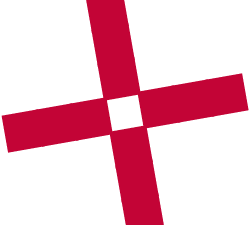Rothko at Vuitton Foundation, Paris
Mark Rothko was the leading representative of the contemporary Abstract Expressionism movement, along with Jackson Pollock.
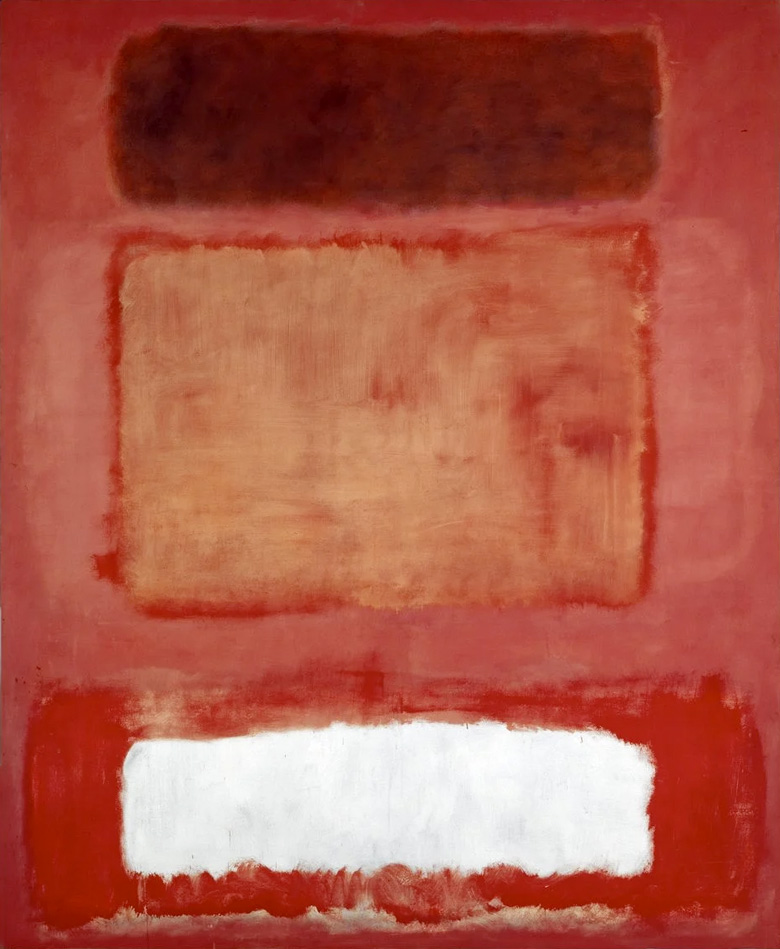
With his globally admired works, he yearns for an ambitious utopia while expressing universal emotions. The artist’s most notable paintings show his famous “color fields.” They are rectangular spaces that float in horizontal bands on the canvas, where the limits are never defined.
The Fondation Louis Vuitton in Paris celebrates his artistic career with the Mark Rothko exhibition. The retrospective brings together 115 works, from the National Gallery of Art in Washington, the Tate Gallery in London, the collection of the artist’s family…
Like his fellow New York School painters Barnett Newman and Clyfford Still, Rothko painted to plumb the depths of himself and the human condition. For him, art was a profound form of communication and artistic creation, a moral act.
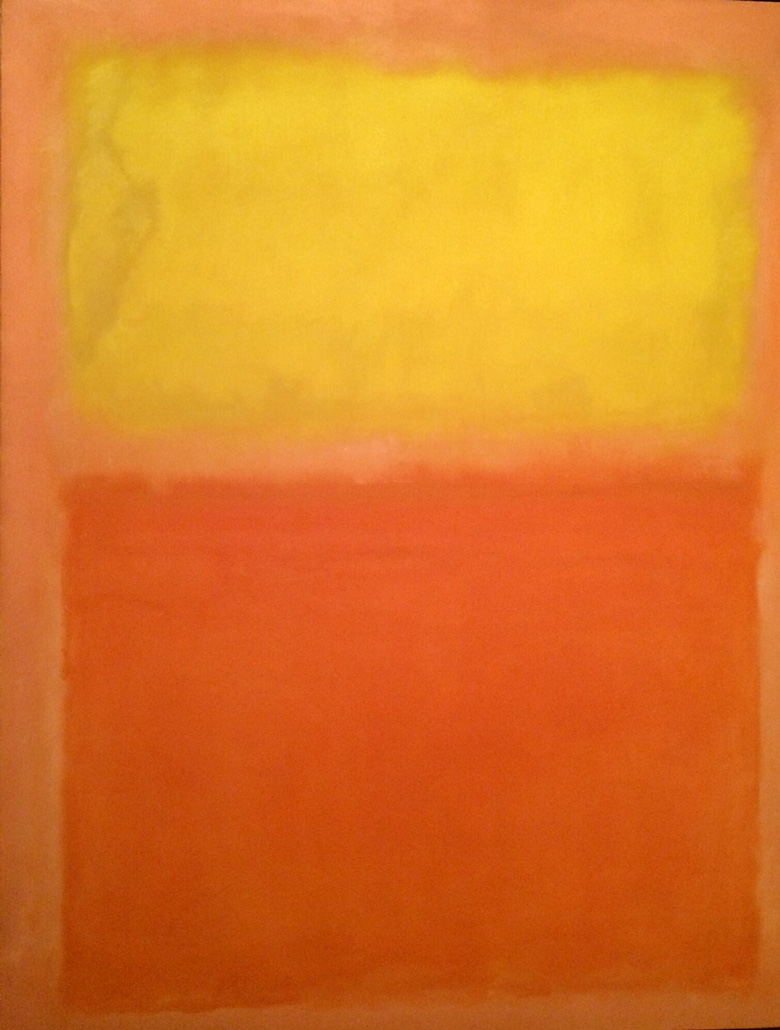
I became a painter because I wanted to elevate painting to a level as moving as music and poetry.
Rothko was born in 1903 in Latvia (then Russia), into a Jewish family. His real name was Markus Rothkowitz. His family emigrated to Oregon (USA) in 1910. The young man managed to enter Yale University, dropping out two years later. He dreamed of going to the mecca of art: New York. There he found his ideal place and his artistic inspiration.
I am only interested in expressing basic human emotions: tragedy, ecstasy, fatality…
Although he studied with Max Weber at the Art Students League, he considered himself a self-taught painter. He also studied at the arch-famous “Mecca of Design”, Parsons School of Design. There he met the Armenian painter, Arshile Gorky. Both European immigrant artists forged an intense friendship.
Gorky powerfully influenced the style of Rothko and many other Abstract Expressionists.

He met the eccentric millionaire, Peggy Guggenheim, who exhibited him in her Art of This Century Gallery. He was soon recognised as one of the main members of the emerging New York School. He worked as an art teacher in Manhattan and invented and developed a particular teaching program. His painting was dominated by a type of Expressionist Figuration. In 1935 he founded the group The Ten, along with Adolph Gottlieb, Ilya Bolotovsky and Louis Harris. Their objective was joining forces to exhibit their works.
The exhibitions “Cubism and Abstract Art” and “Fantastic Art, Dada and Surrealism” had a luxury promoter: Alfred Barr, Director of MoMA (Museum of Modern Art) in 1936.
They were a resounding success and exerted enormous subsequent influence. From then on, his work drifted towards surrealist approaches. After World War II, he met the American Clyfford Still and they both investigated the possibilities of colour spaces.
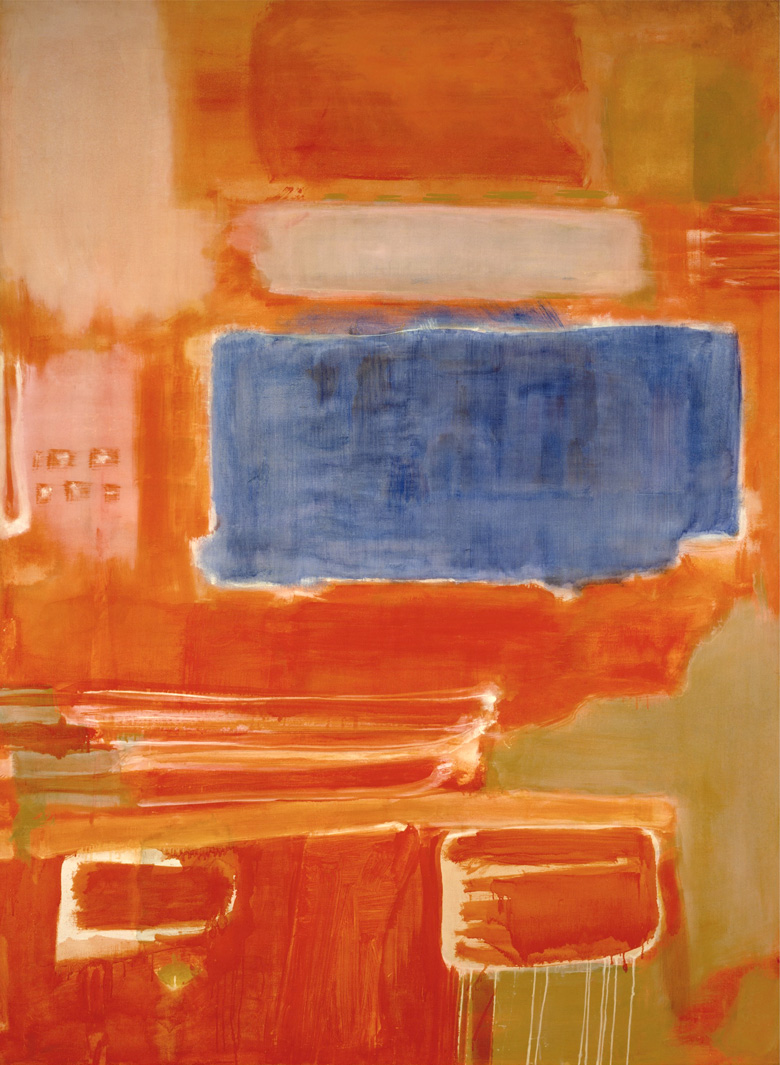
With his friend Arshile Gorky he shared an enormous interest in European Surrealism (Dali, Miró, Tanguy…). This is demonstrated by the biomorphic forms that populate his paintings from the 1940s. They would finally give way to floating chromatic areas on coloured backgrounds. In 1947 he first developed this compositional strategy. This is how William Rubin, curator of paintings at MoMA (Museum of Modern Art), described it:
His coloured rectangles seemed to dematerialise into pure light…
Around 1950, Rothko abandoned figurative references, beginning to develop a very personal abstraction that would define his painting.

On his large canvases, large rectangular spaces of colour, with indefinite profiles, float suspended over monochromatic backgrounds. This style is what would make him recognised worldwide, becoming his hallmark.
It was described as “colour field painting” by art critic Clement Greenberg in 1955. It was the perfect term to describe a pictorial style populated by significant open horizontal spaces with expressive use of colour. Rothko was one of its pioneers. His painter friends would soon follow: Josef Albers, Sam Francis, Richard Diebenkorn, Helen Frankenthaler…
The artist spent the rest of his career exploring the limitless possibilities of superimposing horizontal rectangles of different sizes and chromatic tones onto colour spaces.
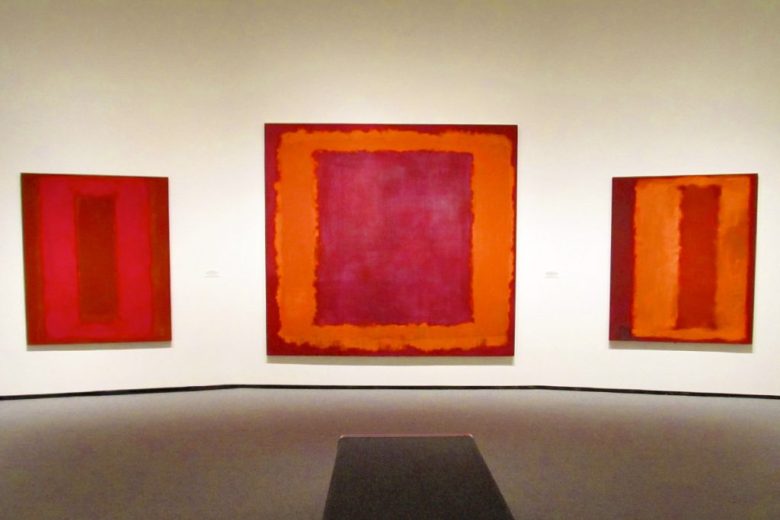
In 1968, his health declined due to years of stress, anxiety, and addictions to alcohol and tobacco. After surviving an aneurysm, he continued smoking and drinking, ignoring his doctor’s orders. He was forced to reduce the size of his canvases to make his work easier. He switched from oil paints to acrylic paints to reduce the effects that the pigments had on his health.
In the late sixties, in the midst of a depressive crisis, he painted a series of works with black acrylic paint that evoked his deep melancholy. Unable to overcome his emotional state, Rothko ended up committing suicide in 1970. Few knew that he had been suffering from chronic depression for a long time. He was 66 years old and left an impressive legacy of 170 works of art that brought him enormous commercial and critical success.
Mark Rothko was one of the greatest representatives of American Abstraction. He expressed himself with his personal pictorial language, linking with the European tradition of the sublime. The artist wanted to express the most basic universal emotions, such as tragedy or ecstasy.
During his lifetime Rothko received several mural painting commissions: Harvard University, Cambridge (1961) and a chapel in Houston, Texas (1964). After the artist’s death, it was renamed The Rothko Chapel in his honour.
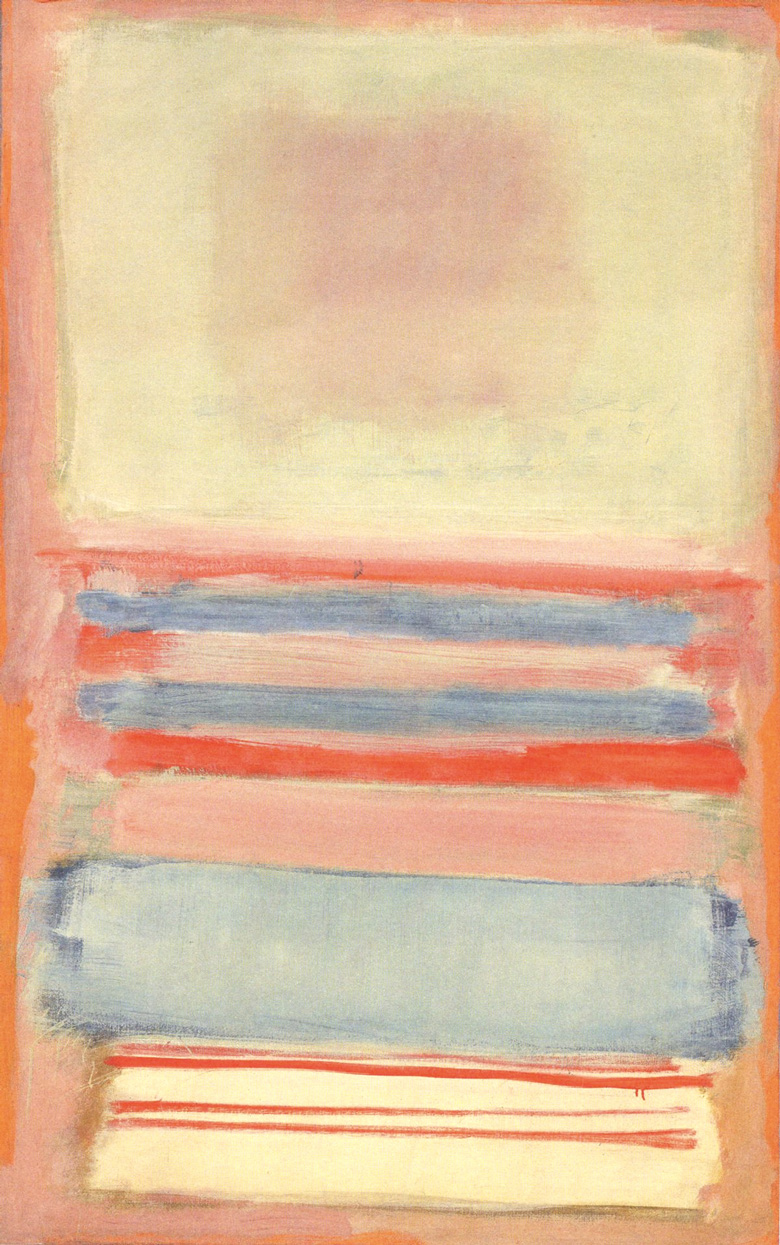
In October 2023, the Fondation Louis Vuitton presents the first Rothko retrospective in France since the exhibition held at the Musée d’Art Moderne de la Ville de Paris (1999).
The exhibition is on display in the Frank Gehry Building, along with large-scale sculptures by the Swiss Alberto Giacometti. An environment similar to the one Rothko had in mind for a UNESCO commission that never saw the light of day has been recreated. It gathers 115 works from private and public collections. The exhibition, organised chronologically, spans his entire career: from his earliest figurative paintings to his best-known abstract works.
It begins with intimate scenes and urban landscapes, like visions of New York subway. They dominated his output before he transitioned to a repertoire inspired by ancient myths and Surrealism.
Rothko was inspired by them to express the tragic dimension of the human being, especially in times of World War II.
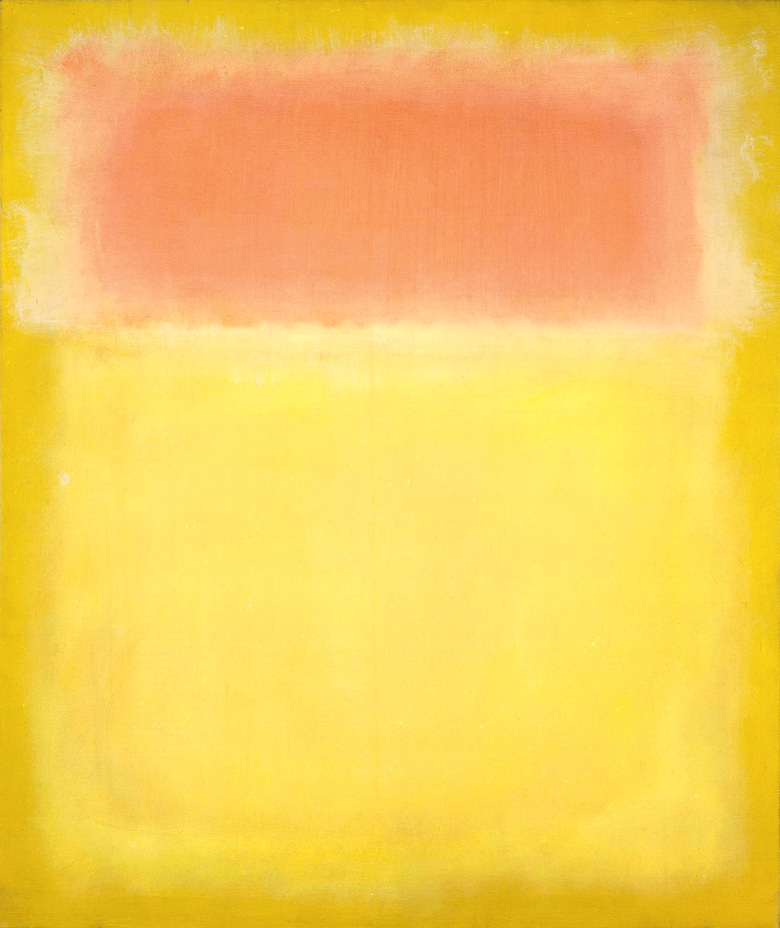
Starting in 1946, the artist took an important turn towards Abstract Expressionism. The first phase of this change is his Multiforms, chromatic masses suspended in a kind of balance on the canvas. Gradually, they decrease, and the spatial organisation of his painting evolves towards “classic” works of the 1950s. The rectangular shapes are superimposed according to a binary or syllabus rhythm, characterised by earth tones: yellow, red, ochre, orange, blue and white.
In 1958, Rothko was commissioned to produce several wall paintings for the Four Seasons restaurant designed by Philip Johnson for the Seagram Building by prestigious architect Ludwig Mies van der Rohe.
In 1961 the Museum of Modern Art in New York organised a retrospective exhibition of his paintings. It was his greatest success.
From the 1950s, Rothko preferred darker tones and muted contrasts but never abandoned his bright colour palette. This is seen in his last Red Painting that was left unfinished in his studio. Admiring his series Black and Gray (1969), we cannot avoid a psychological interpretation of this paintings, associating with depression and suicide.
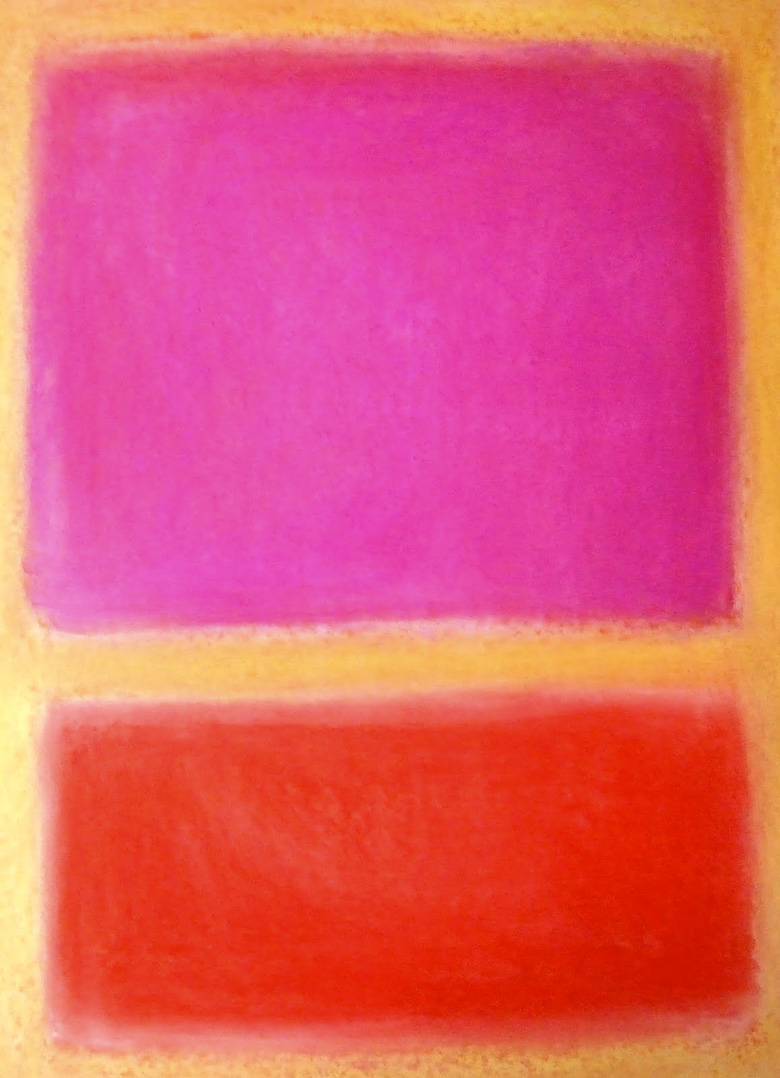
The elements that make Rothko‘s work unique are his permanent investigation, his desire for dialogue with the viewer (without words), and his refusal to be seen as a simple colourist. This exhibition allows us a new interpretation of his emblematic “colour field paintings.” Rothko tried to create paintings that would make people cry.
The fact that many people break down and cry when they see my paintings shows that I can communicate basic human emotions… If you… are moved only by color relationships, then you are missing the point.
- Louis Vuitton Foundation, Paris.
- Mark Rothko
- October 18, 2023 – April 2, 2024

